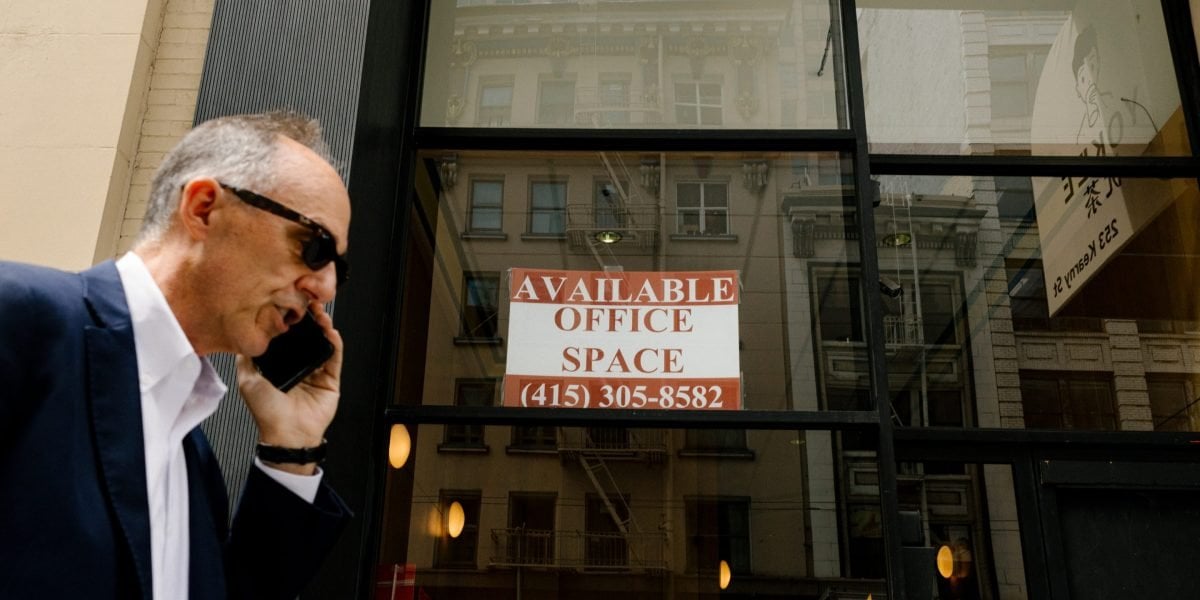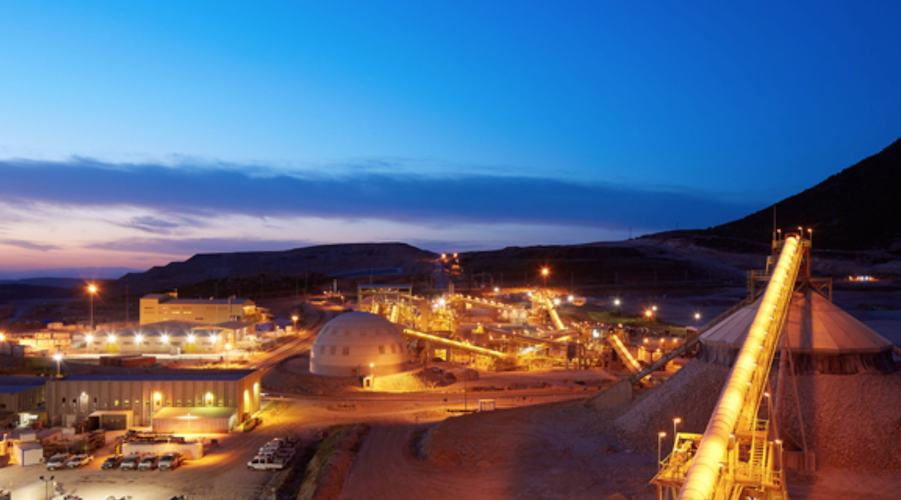Obstacles To Residential Conversions Of Vacant Commercial Buildings In The Netherlands

Table of Contents
Planning Permission and Regulatory Hurdles
Navigating the planning permission process for converting vacant commercial buildings in the Netherlands is a major hurdle for developers. Strict regulations and lengthy procedures often lead to significant delays and increased costs.
Strict Building Codes and Regulations
Dutch building codes are notoriously stringent, placing considerable demands on conversions. These regulations cover various aspects, including:
- Fire safety: Meeting stringent fire safety standards often requires significant structural modifications, including installing new fire escapes, sprinklers, and fire-resistant materials.
- Accessibility: Regulations concerning accessibility for people with disabilities necessitate installing ramps, elevators, and other adaptive features, adding to the overall conversion costs.
- Energy efficiency: The Netherlands has ambitious energy efficiency targets. Conversions must meet demanding insulation and energy performance standards, impacting both budget and design.
These regulations, while necessary for safety and sustainability, significantly increase the cost and complexity of residential conversions, often making projects financially unviable without substantial investment. For example, the specific requirements for "Bouwbesluit" (Building Decree) regarding insulation levels can be particularly challenging in older commercial buildings.
Lengthy Permitting Processes
Obtaining planning permission in the Netherlands can be a lengthy and complex process. Developers often face:
- Bureaucratic hurdles: Navigating local council requirements, submitting extensive documentation, and attending multiple meetings can significantly delay the project timeline.
- Unpredictable timelines: Delays due to administrative processes or objections from neighbors can lead to unpredictable project completion dates, impacting financing and profitability.
- Financial consequences: Delays cause increased holding costs, financing interest, and potential loss of investor confidence.
Streamlining the permitting process through improved digital systems and clearer communication between municipalities and developers is crucial to facilitating conversions.
Zoning Regulations and Land Use Planning
Zoning regulations significantly influence the feasibility of residential conversions.
- Restrictions on land use: Many areas are zoned exclusively for commercial use, making residential conversion impossible without changing the zoning designation.
- Challenges in changing zoning: Securing approval for zoning changes can be a lengthy and politically sensitive process, involving consultations with local residents and various stakeholders.
- Municipal role: Municipalities play a critical role in facilitating conversions by proactively reviewing zoning regulations and offering support to developers.
Understanding and effectively navigating these zoning regulations is crucial for successful projects, highlighting the importance of collaboration between developers and local authorities.
Financial and Economic Barriers
The financial aspects of converting vacant commercial buildings represent another significant obstacle.
High Conversion Costs
Adapting commercial spaces for residential use involves substantial costs:
- Demolition and renovation: Demolishing internal walls, installing new plumbing and electrical systems, and upgrading building services are costly endeavors.
- Infrastructure upgrades: Improving accessibility, installing energy-efficient systems, and addressing structural deficiencies all add to the overall budget.
- Securing financing: Securing financing for such projects can be challenging, as investors often perceive higher risk compared to new-build projects. This can lead to higher interest rates and stricter lending conditions.
However, potential incentives and subsidies at both national and municipal levels can help mitigate these costs and improve the feasibility of these projects.
Market Demand and Property Values
The success of any residential conversion hinges on market demand and property values.
- Market research: Thorough market research is essential to assess the demand for residential properties in the specific location and determine appropriate pricing strategies.
- Property values: The value of converted properties must justify the investment and ensure a reasonable return for developers.
- Risk of oversupply: In areas with high levels of vacant commercial properties, there's a risk of oversupply, potentially leading to lower property values and reduced profitability.
A clear understanding of the local housing market is therefore crucial for project viability.
Lack of Investment and Funding
Securing adequate funding remains a persistent challenge.
- Investor risk aversion: Investors are often hesitant to invest in conversion projects due to the perceived higher risk and complexity compared to new-build projects.
- Funding sources: Potential funding sources include private investors, government grants, and bank loans, but securing these requires a robust business plan and a clear demonstration of project viability.
- Attracting investment: Strategies to attract investment include showcasing the potential for high returns, emphasizing the contribution to urban renewal, and presenting a detailed risk mitigation plan.
Technical and Structural Challenges
The physical characteristics of commercial buildings often pose significant technical obstacles.
Building Structure and Design Limitations
Commercial structures are often not ideally suited for residential use:
- Structural integrity: Older buildings may require significant structural reinforcement to meet residential building codes.
- Floor plans: Adapting existing floor plans to create comfortable and functional residential units requires careful planning and potentially costly modifications.
- Building services: Upgrading outdated building services like plumbing, electrical systems, and HVAC to meet modern standards can be expensive and complex.
Careful structural assessments and detailed design plans are crucial to overcome these challenges.
Integration with Existing Infrastructure
Connecting converted buildings to existing infrastructure can prove difficult:
- Utility connections: Connecting to water, electricity, gas, and waste management systems may require significant upgrades or extensions of existing infrastructure.
- Transportation: Accessibility and proximity to public transportation are important factors in determining the desirability and value of residential properties.
- Inadequate infrastructure: In some areas, inadequate existing infrastructure can pose a significant barrier to conversion, requiring substantial investment in infrastructure improvements.
Addressing these infrastructure limitations is critical for the long-term viability and success of the conversion project.
Environmental Considerations and Sustainability
Sustainable practices are increasingly important in residential conversions:
- Energy efficiency: Meeting stringent energy efficiency standards is crucial, requiring careful consideration of insulation, window glazing, and heating/cooling systems.
- Environmental impact assessments: Conducting thorough environmental impact assessments is necessary to ensure compliance with environmental regulations.
- Green technologies: Incorporating green technologies such as solar panels, rainwater harvesting, and green roofs can enhance the sustainability and appeal of converted buildings and potentially qualify for certifications like BREEAM.
Conclusion
Converting vacant commercial buildings in the Netherlands into residential units offers a significant opportunity to address the housing shortage and revitalize urban areas. However, numerous obstacles exist, including stringent planning regulations, high conversion costs, and complex technical challenges. Successfully navigating these obstacles requires careful planning, securing adequate funding, and collaborating with local authorities and other stakeholders. Understanding these challenges, as outlined above, is crucial for the successful residential conversion of vacant commercial buildings in the Netherlands. To learn more about government incentives and programs aimed at supporting vacant commercial building conversions, explore resources available through the national and municipal governments. By addressing these obstacles head-on, we can unlock the significant potential for urban renewal and increased housing supply through the intelligent and sustainable residential development of previously vacant commercial spaces. Further research into specific case studies and government programs is encouraged to promote this crucial aspect of property development in the Netherlands.

Featured Posts
-
 Ver Paw Patrol Piratas 15 Minutos De Rescates En Espanol En You Tube
May 28, 2025
Ver Paw Patrol Piratas 15 Minutos De Rescates En Espanol En You Tube
May 28, 2025 -
 Ajaxs Title Charge Continues Feyenoord Remains In The Hunt
May 28, 2025
Ajaxs Title Charge Continues Feyenoord Remains In The Hunt
May 28, 2025 -
 Dangerous Climate Whiplash Global Cities Face Growing Impacts Report Reveals
May 28, 2025
Dangerous Climate Whiplash Global Cities Face Growing Impacts Report Reveals
May 28, 2025 -
 Angels Four Game Winning Run
May 28, 2025
Angels Four Game Winning Run
May 28, 2025 -
 Ivanhoes Congo Copper Mine Production Guidance Suspended
May 28, 2025
Ivanhoes Congo Copper Mine Production Guidance Suspended
May 28, 2025
Latest Posts
-
 Where To Invest A Geographic Analysis Of Promising Business Locations
May 29, 2025
Where To Invest A Geographic Analysis Of Promising Business Locations
May 29, 2025 -
 The China Market Hurdles For Bmw Porsche And Other Automakers
May 29, 2025
The China Market Hurdles For Bmw Porsche And Other Automakers
May 29, 2025 -
 Putin Criticism From Trump Russias Response And Its Implications
May 29, 2025
Putin Criticism From Trump Russias Response And Its Implications
May 29, 2025 -
 Kremlin Dismissal Of Trumps Putin Critique An Emotional Reaction
May 29, 2025
Kremlin Dismissal Of Trumps Putin Critique An Emotional Reaction
May 29, 2025 -
 Russia Calls Trumps Putin Criticism An Emotional Response
May 29, 2025
Russia Calls Trumps Putin Criticism An Emotional Response
May 29, 2025
